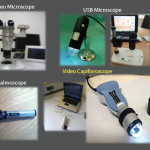A 68-year-old patient reports that her eyes have been itchy and red for approximately one month. She was treated with erythromycin gel on Jan. 10; while the itching did not stop, the redness resolved. She denies any matting and has not used any other type of eye drops. She states there has been no change in her vision except for the need for reading glasses. She has sporadically painful areas around the angle of her mandible with intermittent enlargement. She has a cousin with Sjögren’s syndrome, so she is aware of the symptoms and feels that she has had some salivary gland enlargement and tenderness.
Social History: The patient does not smoke or drink.
Past Medical History: She has had a tonsillectomy and partial hysterectomy.
Family History: Her parents are deceased.
The examination was comprehensive.
Assessment/Plan: This patient presents with recent, acute conjunctivitis and the workup reveals positive SS-B, with a history of Raynaud’s phenomenon, chronic low back pain and fleeting arthralgias.
- Positive SS-B—Given the rather acute nature of her conjunctivitis and spontaneous resolution, it is unclear if this was clearly secondary to sicca rather than a possible allergic conjunctivitis or infectious. I am referring her to an ophthalmologist. Given her history of Raynaud’s and positive ANA and SS-B, I do suspect she has some type of undifferentiated connective tissue disease but does not yet meet the clear-cut criteria for Sjögren’s syndrome. We will start hydroxychloroquine 400 mg per day.
- Chronic low back pain and fleeting arthralgias—This may be secondary to her undifferentiated connective tissues disease or she may have another condition, such as a spondyloarthropathy. We will order neck X-rays and evaluate her lumbar and SI X-rays today. We will also check an HLA-B27 and serologies, such as rheumatoid factor and anti-CCP, for concomitant rheumatoid arthritis. We have started her on 500 mg naproxen B.I.D. (twice daily by mouth). She has been instructed to take with food.
- Raynaud’s—I suspect this is also associated with her undifferentiated connective tissue disease. She has normal nailfold capillaroscopy. This is not symptomatic enough to warrant prophylactic treatment with such medication as a calcium-channel blocker.
Dear Dr. Jones:
Thank you for referring Patient X for further evaluation of her recently irritated eyes and workup revealing a positive SS-B antibody.
She has had some neck pain in the past two years. She denies any recent numbness, tingling or any injury to her neck. She also has a history of chronic low back pain, which has been bothering her for the past six months. She states the pain does improve with exercise, but it occasionally wakes her from her sleep. She experiences approximately 20 minutes of stiffness in the morning. She states that she has no joint swelling but has some pain in her right first MCP as well as her right ankle. She has had several injuries in her right ankle. Ibuprofen helps; she currently takes 800 mg as needed. She has had Raynaud’s for the past 10 years. She has had frostbite on her feet, but not her hands. She states that one or two fingers will turn white when the temperature drops.
Her lab report from last year shows her CBC was unremarkable, with platelets of 275, and hematocrit of 40.9. The CMP was unremarkable with a creatinine of .88 and normal LFTs. The TSH was 1.58. Vitamin D was 32.1. Her most recent labs show a TSH of 1.43 and a positive ANA with an SS-B of 2.2 with the upper limit of normal being .9. The anti-ENA panel was negative. The double-stranded DNA was also negative.
The plan is to evaluate additional labs, which will include a rheumatoid factor, anti-CCP, ESR, CRP, complete levels, HLA-B27, a baseline vitamin D, SPEP, hepatitis B and C serology, CK and antiphospholipid antibodies as well as a baseline CBC and CMP. We will start her on 500 mg naproxen B.I.D. (twice daily by mouth) along with food. Also, we started her on hydroxychloroquine 400 mg q. (every) day. We also will evaluate X-rays of her lower back, SI joints, hand and feet. She is to return to the practice in two weeks for a follow-up.
It was a pleasure to see this patient. Please contact us with any questions or concerns.
Sincerely,
Jane Doe, MD
Follow-Up
Two weeks later Dr. Doe contacts the ophthalmologist to discuss collaboration for a treatment of the patient. The call lasts 14 minutes.
How should the visit and follow-up phone call be coded?
Editor’s note: Case vignettes presented in the Coding Corner are created to illustrate questions about coding. They are not intended to represent the full medical record of a case.


